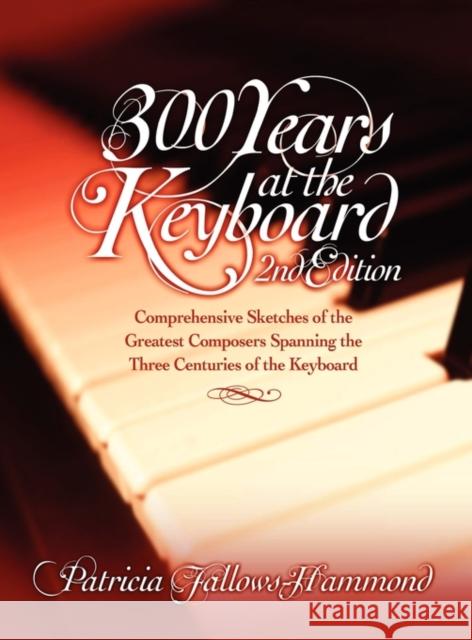300 Hundred Years at the Keyboard - 2nd Edition » książka
300 Hundred Years at the Keyboard - 2nd Edition
ISBN-13: 9780894960888 / Angielski / Twarda / 2010 / 314 str.
300 Hundred Years at the Keyboard - 2nd Edition
ISBN-13: 9780894960888 / Angielski / Twarda / 2010 / 314 str.
(netto: 132,45 VAT: 5%)
Najniższa cena z 30 dni: 138,71
ok. 16-18 dni roboczych
Dostawa w 2026 r.
Darmowa dostawa!
Choice Magazine (a major library review magazine): "After an introductory section on the history of the piano, particularly as reflected in and influenced by works of the major composers for the instrument, this interesting and informative book describes various compositional "schools," from Austro-German, French, and Italian through English, American, Russian, Spanish, Japanese, and others. This section constitutes a brief course in music history beginning with the Renaissance. ... The body of the work consists of historical and stylistic sketches of 17 composers, with brief remarks about several works of each, and lists of selected works, ending with a complete work or movement. These sketches are exceptionally well written, assuming an intelligent reader, and convey a great deal of information concisely.... this book contains much well-organized and useful material. For libraries serving serious amateur pianists, high school upward. ****************** Booklist (The book review magazine of the American Library Association): This authoritative volume will make a solid addition to the public library music collection. After offering a brief opening chapter on the evolution of the piano as instrument and the changing styles of technique, author Pat Hammond provides opinionated but well-reasoned analyses of the works of the major piano composers, with focus on the Baroque era (Bach and Handel), the Classical age (Haydn, Mozart Beethoven), Romanticism (Schubert, Chopin Liszt, and others), Impressionism (Debussy) and Modernism (Bartok). This book's unique feature is its inclusion of musical examples of each composer's work, which are meant to be played as one reads along. Pertinent biographical material is also featured for the great masters. Appendixes include a suggested twentieth-century piano repertoire and a bibliography. Piano music - Bibliography ******************* Clavier Magazine "Compiled and annotated by Patricia Fallows-Hammond. Suitable as a reference source, this handbook supplies concise biographical and stylistic sketches of composers and annotation of selected compositions. ... Fallows-Hammond has a knack for setting and maintaining an appropriate level of sophistication. Writing in a crisp, direct style, she steers the student toward complicated subjects and gives them a palpable hold on them. To explain the concept of the concerto grosso, for example, she explains that, "In Handel's time, Concerto Crosso meant a small group of instruments playing in contrast to a larger body of strings." Her synopsis of the development of sonata form is equally apt....Commentary on the composers is well-researched and written at a uniform level of detail that will make it useful to a wide audience....Fallows-Hammond does a good job of compiling accurate information on the composers she has chosen. If the contents of the book serve your purposes, you will find this handbook a handy reference source. " **************** The American Organist "The author has created a self-instruction course which gives information about the evolution of the piano and changing styles in piano technique, and then discusses topics with emphasis on special composers: ..... Piano students seeking background information will profit from this book. Recommended for public libraries." ******************** Keyboard Magazine "Patricia Fallow-Hammond's 302 page study embraces the proposition that historical context is an important, and frequently neglected, element in building an understanding of classical repertoire. .... she has assembled a fairly basic catalogue of keyboard works, arranged chronologically by composer, and preceded each list with a short biography relating milestones from each composer's life. ....... Her decision to further enlighten the reader with short samples of their handiwork is a happy extra addition. Her efficiency at summarizing and packaging that line is what makes her debut in print a success."











